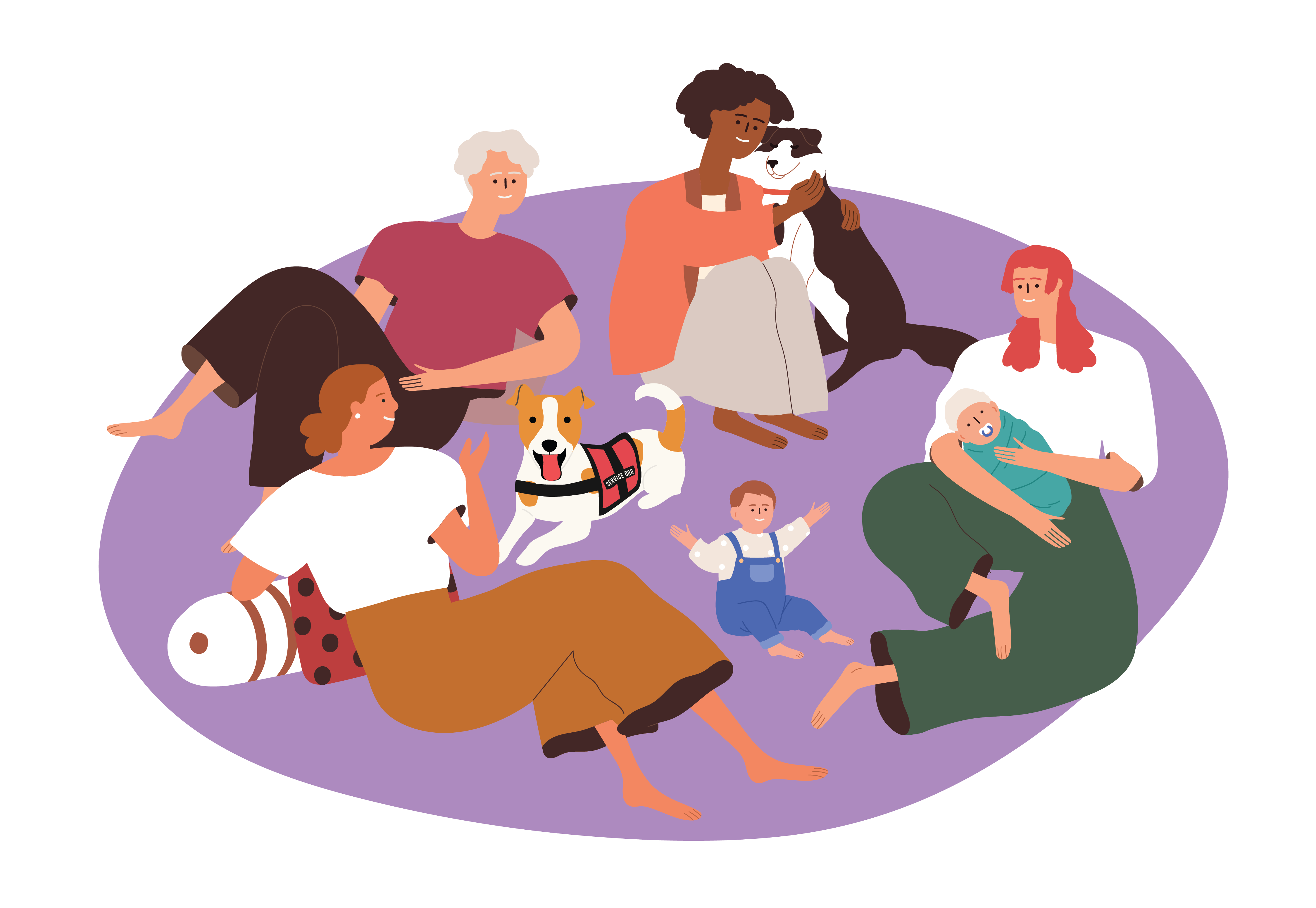Participatory Research and Evaluation Methods
When designing a research or evaluation project with equity and parity in mind, developing participatory research methods can be especially powerful.
When designing a research or evaluation project with equity and parity in mind, developing participatory research methods can be especially powerful. Participatory research methods can be defined as an umbrella term for research designs, methods, and frameworks that use systematic inquiry in direct collaboration with those affected by the issue being studied for the purpose of action or change (Cargo & Mercer, 2008). Participatory methods prioritize co-constructing evidence and knowledge through partnerships between researchers/evaluators and community members who may not have formal training in research methods.
Doing participatory research means working in partnership with multiple collaborators including community members, the families we work with, internal colleagues, and other community providers. Participatory methods can be utilized to garner specific information for a new program or policy – or might aim for the empowerment of communities or participants with lived expertise.
Participatory methods highlight the importance of relationships and maintaining a balance of power within the relationships. Sometimes, researchers can be seen as experts who people think they should listen to. Participatory methods are in line with both the Promising Futures Storytelling and Partnerships Guiding Principles. The purpose of participatory research is to make sure the power remains with the community or those being studied or served. In participatory research, local knowledge and lived expertise is valued, and local participants at all levels should freely share their needs, opinions, and perspectives.
Participation does not just occur at the beginning of a research project or when a program is designed. Participation occurs throughout the duration of the project and at all levels of program design, evaluation, and reporting. As data is collected and other information gathered, it should be shared with families and communities routinely, and consumers should play an active role in analysis and reflection before reporting. Local knowledge is valuable to understanding the reasons why programs work or do not work, and consumers should be included in continuous quality improvement (CQI) for this reason. Consumers know best how to overcome barriers and provide solutions to programmatic problems.
Benefits of Utilizing Participatory Methods:
Having consumers involved at all levels and stages of a research or evaluation project could also increase participation by keeping people interested in the project and its outcomes long term.
Enhance and ensure culturally and logistically appropriate strategies
Enhance recruitment capacity
Increase capacity building and skill acquisition in communities and local participants
Increase the quality of outputs and outcomes over time
Increase the sustainability of project goals beyond original funding
Create system changes and new unanticipated projects and activities
Steps of the Process

Image retrieved from Journal of Participatory Research Methods.
Community members and partners should be involved at all levels of the project including:
Naming the problem or desired outcome or change
Developing a theory of change or logic model for how to achieve success
Identifying the questions to ask about the project and the best ways to ask them
Project Design
Engage and create partnerships and community buy in with:
- Families served
- Community groups
- Providers within your agency
- Other community providers
- Government (if appropriate)
Make plans to collect and analyze data and to re-evaluate project design regularly (CQI)
Develop a process for resolving conflict and differences in ideas and opinions
Develop a reasonable timeline with input from all
Project Implementation
Begin to serve families
Have a plan for monitoring project process and attainment of milestones
Include partners in CQI processes
Data Collection
Be sure to gather partner and consumer input about standardized assessments and other data collection instruments to be used throughout the project
With input from partners, ensure all data collection is culturally and linguistically competent and trauma-informed
Use consumer guidance about modifications to data collection methods
Data Analysis
Share aggregated raw data with a consumer advisory group
Involve partners in meaning-making and discussions on why trends might be occurring
Reporting
Use collected data
Tell the story of the program
Use consumer impressions to supplement findings
Share reports with multiple groups: consumers, community providers, etc.
Use many methods of data visualization that are accessible
Create multimedia presentations
Use multiple methods of dissemination: written reports, radio, television, online, social media
Action
Determine what might need to be changed about your program to better serve consumers
Get consumer input about possible changes
Revise the program as needed, do small tests of change, and revise again
Participatory processes shift power to communities, helps to builds trust, both between your organization and the community and among the individuals being served by your program. This trust can raise awareness about your services, and enhance future social change efforts.
Resources:
- Research and Analyse - Participatory Methods
- Participatory Research Methods - Choice Points in the Research Process
- Community-based participatory research and integrated knowledge translation: advancing the co-creation of knowledge
- Community-Based Participatory Research
- Community-based Participatory Research
- Participatory Research: Strategies and Tools






